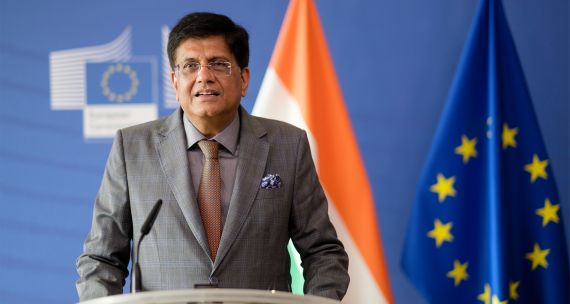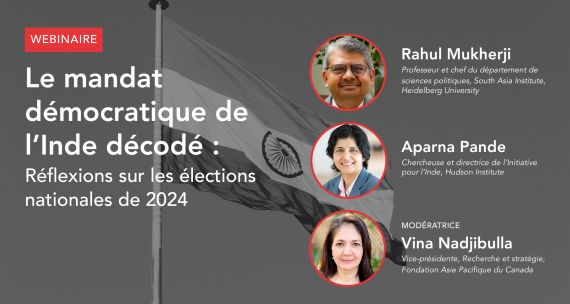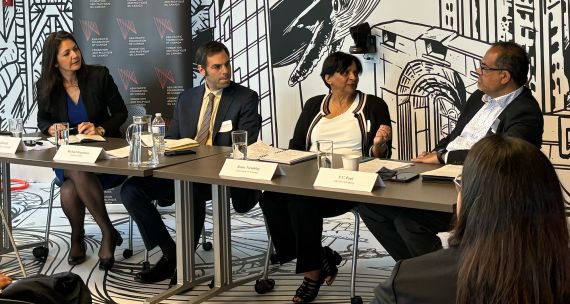It is now almost two years since the BJP, led by Narendra Modi, won a landslide victory in India's parliamentary elections. Coming after a prolonged period of absentee leadership, policy drift, slowing growth and endless corruption scandals, the victory by the charismatic leader with a pro-business beat and great communications skills, sent expectations skyward. Indeed, expectations got well ahead of reality. What is now clear is that Modi is an incrementalist, with a strong managerial and anti-corruption beat, who eschews "big bang reforms" but is consistently attempting to implement a long-term game plan of renewal.
So, after serial disappointments over the last decade about the unrealized potential of the Indian economy, how should we calibrate expectations about Indian growth prospects in today's rather gloomy global economy?
The answer is that, relative to other large emerging market economies, India is doing quite well. The IMF foresees Indian real GDP growing around 7.5% this year and next, slightly stronger than its neighbour, China, and dramatically outpacing the remaining BRICS — Brazil (negative growth), Russia (negative growth) and South Africa (tepid growth).
The IMF believes that India will continue to outgrow China for the next several yearsWhy? There are a number of factors: the stimulus of lower energy costs, the Modi reforms to alleviate supply side constraints, a reversal of FDI outflows, and robust domestic demand as a result of improving consumer and business confidence. The Reserve Bank of India (RBI) has kept interest rates high to dampen inflation, which is on track to decline to 5% this year aided by lower energy prices, and this has opened up scope for the RBI to begin reducing rates (as they did on April 5th). The IMF believes that India will continue to outgrow China for the next several years, but sustaining this pace of growth will require continuing the microeconomic reform agenda.
Fiscally, India has managed to bring its federal government deficit (as a proportion of GDP) down to 3.5% this year, but the states run aggregate deficits in the order of 2.5–3% as well, so the total government deficit is around 6.5% of GDP. The total government debt-to-GDP ratio of 65% should not pose fiscal stability problems given India's relatively high growth rate.
The government has astutely redeployed energy subsidies to finance infrastructure investments. An ongoing fiscal concern in India is its low "tax take" — the federal government's gross tax-to-GDP ratio is barely 10%, and it is estimated that only 30 million Indians paid tax last year in a population of 1.3 billion. On the spending side of the ledger, the priorities have been agriculture support (after two weak monsoons), rural development spending, infrastructure investments and a massive structural shift to direct benefit transfers deposited in the bank accounts of beneficiaries — made possible by the extraordinary biometric identity card program (Aadhaar) covering 950 million people, and the impressive financial inclusion initiative which has opened over 200 million new bank accounts for impoverished families.
Only 30 million Indians paid tax last year in a population of 1.3 billionThe financial sector is dominated by state-owned banks with under-developed capital markets — banks provide too much of corporate lending and capital markets too little. NPLs (non-performing loans) and restructured loans reached close to 11.5% at the end of last year, much too high, and the Indian government is providing about US$7 billion for state bank recapitalization, an amount which is well below IMF estimates of its recapitalization needs. The Indian public sector banking system is also in urgent need of reforms to governance, management appointment processes, and decision making. A small step to change this culture is under way: ownership restrictions (the current range of 56-90% government equity stakes in the state bank) will fall to 51%, and below 50% for one state bank.
At the recent IIF Conference in New Delhi, there was a healthy and helpful discussion of the key impediments to growth and to foreign investment in the Indian economy. In no particular order these included: a dysfunctional bankruptcy framework; an immature domestic capital market; withholding taxes on foreign capital; corruption (particularly at the state level — the Modi government has made progress at the federal level); policy and renegotiation risks (a number of legacy and high profile tax eases are yet to be resolved); land acquisition costs (and legal risks); and, the need for tax reforms.
A daunting list, but shorter than it was two years ago and it would be shorter still if it were not for political obstructions to proposed reforms such as the GST in the upper house of parliament where Mr. Modi's government does not have a majority.
Given these impediments, where does Mr. Modi's reform agenda stand today? It is, at the same time, both ambitious and incremental — politically astute in a country with strong vested interests that appreciate reform more in concept that in practice.
"Make in India" . . . at times has worrying protectionist overtonesFinance Minister Jaitley is rightly concerned that there is little private sector capital (either domestic or foreign) directed to greenfield infrastructure investments — indeed, even today these are almost totally government financed. He seems steadfast on a program of privatizations, asset recycling and liberalization of FDI. He is clearly committed to action on bankruptcy reform, a major impediment to investment, and as noted, he is moving ahead with state bank recapitalization and future consolidations among the state banks. The government's impressive financial inclusion agenda remains a priority. There are some signals that the opposition parties may allow the GST reform to move forward, which would provide real efficiency gains to business across the economy. One high profile reform priority, "Make in India," however, at times has worrying protectionist overtones.
The bottom line: the Modi government's commitment to "unblock growth" is real, if incremental, and is strongly welcomed by both the Indian business community and international investors. With an approval rating of close to 75%, Mr. Modi's agenda also appears to have broad-based domestic support. But the growth treadmill in India is daunting — roughly 12 million new jobs must be created each and every year to absorb the Indian youth graduating from schools and the surplus agricultural labour freed up as India modernizes and urbanizes. And India must achieve all this in the context of an uneven and volatile global economy.
12 million new jobs must be created each and every year to absorb the Indian youthFor Canada and Canadian business, the Canada-India commercial relationship far underperforms its potential for two, $2+ trillion economies with Commonwealth links, strong people-to-people ties and a shared commitment to pluralism. The upcoming visit to India of Prime Minister Trudeau provides an opportunity to reset the commercial relationship, to the mutual benefit of both countries. With the right frameworks — we should finish negotiations on a FIFA and FTA — Canadian firms and investors can contribute to the growth of the Indian economy and the demands of its rapidly growing middle class. E-commerce, for example, holds considerable potential to market Canadian products in the Indian consumer market.
Kevin Lynch is Vice Chair of BMO Financial Group and a distinguished former public servant with 33 years of service with the Government of Canada. Mr. Lynch is also a Member of the Board of the Asia Pacific Foundation of Canada.




